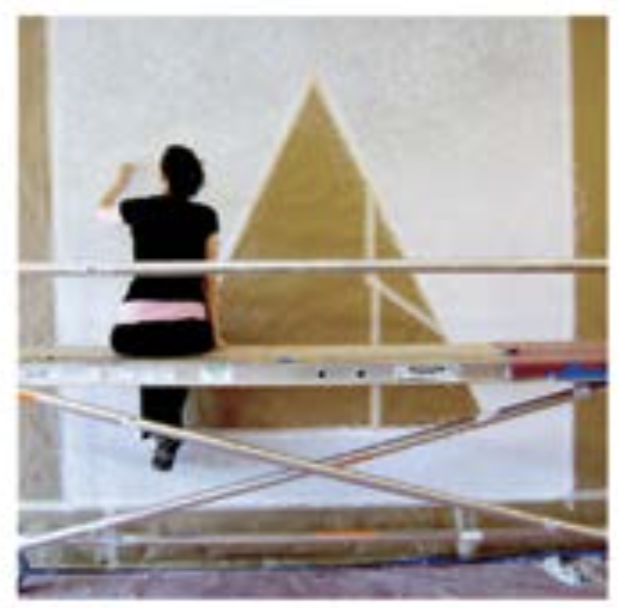When an artist uses a conceptual form of art, it means that all of the planning and decisions are made beforehand and the execution is a perfunctory affair. The idea becomes a machine that makes the art.
—“Paragraphs on Conceptual Art” by Sol LeWitt, Artforum, June 1967
Lines of Human Convergence
When conceptual artist Sol LeWitt died, in 2007, at the age of seventy-eight, he was in the process of planning the last, and biggest, exhibition of his career—a wall-drawing retrospective at the Massachusetts Museum of Contemporary Art (MASS MoCA). The scale of the intended exhibition was humongous by any measure. One entire 27,000-square-foot Industrial Revolution–era factory building (MASS MoCA’s Building 7) would house wall drawings spanning LeWitt’s entire career, from 1968 until 2007. The final result would be an important scholarly resource, a reference point for all future LeWitt installations, and a major tourist draw to the small corner of Western Massachusetts where MASS MoCA is located. Given its size, scope, and durability, what might have been just another blockbuster show would likely become one of the great art pilgrimages in the United States.
It was LeWitt’s wish that the MASS MoCA team be made up of crew members who’d worked on his previous installations. So in early April 2008, about thirteen professional artists (of which I am one), nine apprentices, fourteen interns, and LeWitt’s eight closest assistants converged on the town of North Adams. We’d all abandoned our jobs and our home lives in order to spend five months installing a total of one hundred wall drawings.
To give a broader sense of the installation’s scale: the drawings we’d come to install would occupy nearly an acre of wall space. The estimated project budget was about 10 million dollars. It would take almost fifty people putting in eight-hour days, six days a week, from April to October, to complete the installation. Thousands of yards of red rosin paper were needed to cover the floors as we painted. Other supplies we required: hundreds of rolls of white receipt paper; brown roll paper in one-foot and half-foot lengths; dozens of rulers; dozens of boxes of drafting tape in one-inch and half-inch lengths; dozens of boxes of blue masking tape, paper towels, and thin green tape; rolls of plastic sheeting; gallons and gallons of Benjamin Moore house paint in white, black, and gray; dozens of bottles of Lascaux acrylic paint in black, white, red, yellow, and blue; dozens of gallons of distilled water (for mixing with the Lascaux paint); more than a thousand water-soluble pastel crayons in white, red, yellow, and blue; dozens of paintbrushes in various sizes;...
You have reached your article limit
Sign up for a digital subscription and continue reading all new issues, plus our entire archives, for just $1.50/month.
Already a subscriber? Sign in





